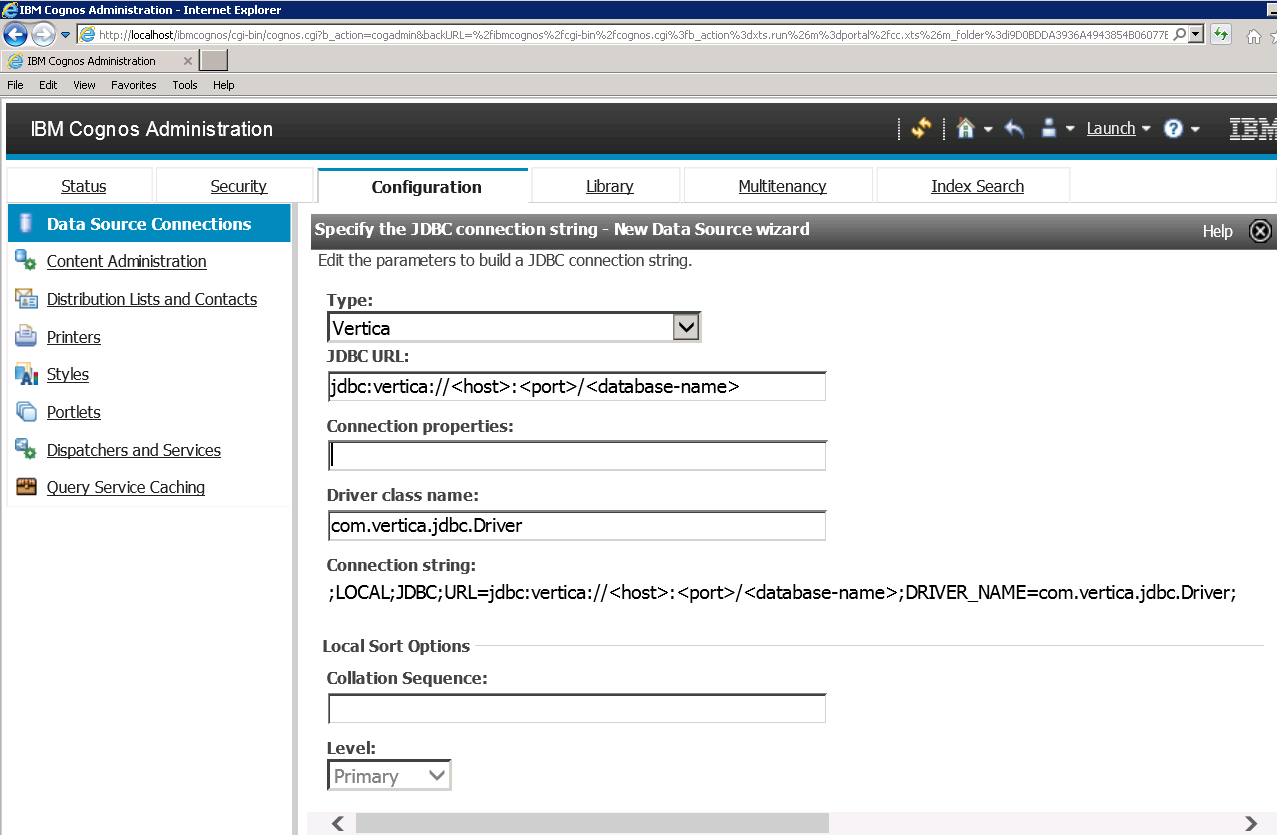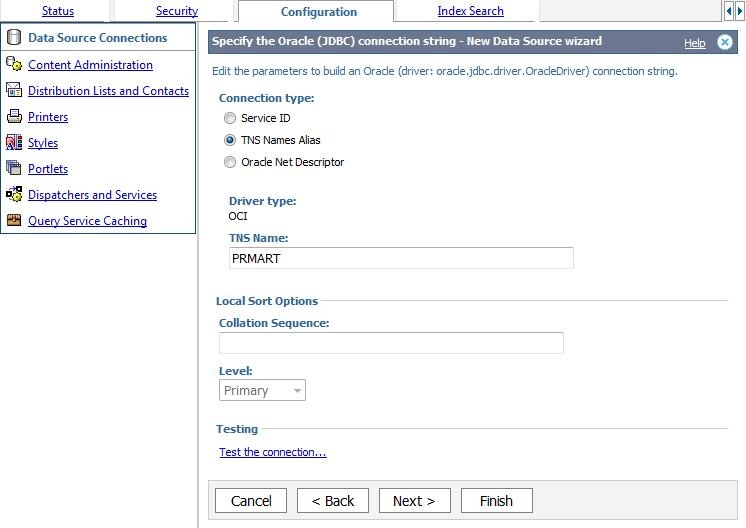In my case, this error appeared when I attempted to load a class from a batch file in the Windows command prompt.
“Caused by: java.lang.UnsupportedClassVersionError: (*myclassname*) bad major version at offset=6”
This error indicates that your projects were compiled with a higher level Java compiler than the runtime can support.
Firstly, confirm what version of Java is installed on your machine. In Windows, open a command prompt window and enter the following command:
Using JDBC drivers for IBM Cognos Controller IBM® Cognos® Controller uses JDBC (Java™ Database Connectivity) connectivity to access the Controller database. You need to download a suitable JDBC driver from the relevant database provider's website. String url = 'jdbc:oracle:kprb:' String url = 'jdbc:default:connection:' Because in that environment, the driver actually runs within a default session, and the client is always connected so the connection should never be closed. Register Oracle JDBC driver The Oracle JDBC driver class name is oracle.jdbc.OracleDriver.
java -version
The output will look something like:
java version '1.5.0_22'
Java(TM) SE Runtime Environment (build 1.5.0_22-b03)
Java HotSpot(TM) Client VM (build 1.5.0_22-b03, mixed mode, sharing)
This message confirmed that my runtime environment was Java 5 – but error above was stating the classes had been compiled in Java 6. The next step is to check what version of Java is being used to compile your project. In my case, I was using Eclipse.
Go to Window > Preferences > Java > Installed JREs and make sure your 5.0 runtime shows up in the list and is checked. If nothing suitable appears in the list of options, then you need to download the correct Java version from the Sun website.
Finally, go to Window->Preferences->Java->Compiler and ensure that your Compiler compliance level is set to 1.5.
- JDBC Tutorial
- JDBC Examples
- JDBC Useful Resources
- Selected Reading
After you've installed the appropriate driver, it is time to establish a database connection using JDBC.
The programming involved to establish a JDBC connection is fairly simple. Here are these simple four steps −
Import JDBC Packages: Add import statements to your Java program to import required classes in your Java code.
Register JDBC Driver: This step causes the JVM to load the desired driver implementation into memory so it can fulfill your JDBC requests.
Database URL Formulation: This is to create a properly formatted address that points to the database to which you wish to connect.
Create Connection Object: Finally, code a call to the DriverManager object's getConnection( ) method to establish actual database connection.
Import JDBC Packages
The Import statements tell the Java compiler where to find the classes you reference in your code and are placed at the very beginning of your source code.
To use the standard JDBC package, which allows you to select, insert, update, and delete data in SQL tables, add the following imports to your source code −
Register JDBC Driver
You must register the driver in your program before you use it. Registering the driver is the process by which the Oracle driver's class file is loaded into the memory,so it can be utilized as an implementation of the JDBC interfaces.
You need to do this registration only once in your program. You can register a driver in one of two ways.
Cognos 11 Oracle Jdbc Connection
Approach I - Class.forName()
The most common approach to register a driver is to use Java's Class.forName() method, to dynamically load the driver's class file into memory, which automatically registers it. This method is preferable because it allows you to make the driver registration configurable and portable.
The following example uses Class.forName( ) to register the Oracle driver −
You can use getInstance() method to work around noncompliant JVMs, but then you'll have to code for two extra Exceptions as follows −
Approach II - DriverManager.registerDriver()
The second approach you can use to register a driver, is to use the static DriverManager.registerDriver() method.
You should use the registerDriver() method if you are using a non-JDK compliant JVM, such as the one provided by Microsoft.

The following example uses registerDriver() to register the Oracle driver −
Database URL Formulation
After you've loaded the driver, you can establish a connection using the DriverManager.getConnection() method. For easy reference, let me list the threeoverloaded DriverManager.getConnection() methods −
getConnection(String url)
getConnection(String url, Properties prop)
getConnection(String url, String user, String password)
Here each form requires a database URL. A database URL is an address that points to your database.
Formulating a database URL is where most of the problems associated with establishing a connection occurs.
Following table lists down the popular JDBC driver names and database URL.
| RDBMS | JDBC driver name | URL format |
|---|---|---|
| MySQL | com.mysql.jdbc.Driver | jdbc:mysql://hostname/ databaseName |
| ORACLE | oracle.jdbc.driver.OracleDriver | jdbc:oracle:thin:@hostname:port Number:databaseName |
| DB2 | COM.ibm.db2.jdbc.net.DB2Driver | jdbc:db2:hostname:port Number/databaseName |
| Sybase | com.sybase.jdbc.SybDriver | jdbc:sybase:Tds:hostname: port Number/databaseName |
All the highlighted part in URL format is static and you need to change only the remaining part as per your database setup.
Create Connection Object
We have listed down three forms of DriverManager.getConnection() method to create a connection object.
Using a Database URL with a username and password
Oracle Jdbc Driver Oracledriver Jar
The most commonly used form of getConnection() requires you to pass a database URL, a username, and a password:
Assuming you are using Oracle's thin driver, you'll specify a host:port:databaseName value for the database portion of the URL.
If you have a host at TCP/IP address 192.0.0.1 with a host name of amrood, and your Oracle listener is configured to listen on port 1521, and your database name is EMP, then complete database URL would be −
Now you have to call getConnection() method with appropriate username and password to get a Connection object as follows −
Using Only a Database URL
A second form of the DriverManager.getConnection( ) method requires only a database URL −
However, in this case, the database URL includes the username and password and has the following general form −
So, the above connection can be created as follows −

Using a Database URL and a Properties Object
A third form of the DriverManager.getConnection( ) method requires a database URL and a Properties object −
A Properties object holds a set of keyword-value pairs. It is used to pass driver properties to the driver during a call to the getConnection() method.


To make the same connection made by the previous examples, use the following code −
Closing JDBC Connections
At the end of your JDBC program, it is required explicitly to close all the connections to the database to end each database session. However, ifyou forget, Java's garbage collector will close the connection when it cleans up stale objects.
Relying on the garbage collection, especially in database programming, is a very poor programming practice. You should make a habit of always closing the connection with the close() method associated with connection object.
Jdbc Download
To ensure that a connection is closed, you could provide a 'finally' block in your code. A finally block always executes, regardless of an exception occurs or not.
To close the above opened connection, you should call close() method as follows −

Cognos Oracle Jdbc Driver Oracledriver 64-bit
Explicitly closing a connection conserves DBMS resources, which will make your database administrator happy.
For a better understanding, we suggest you to study our JDBC - Sample Code tutorial.